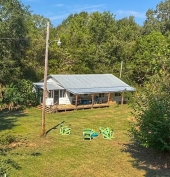




It's time to get positive about negative thinking  -Art Donnelly
-Art Donnelly




 1
1




ferndale wrote:
i kinda wish paul stamets would engineer mycelium that would eat asphalt.

 Is that gross or net, I wonder?
Is that gross or net, I wonder?Idle dreamer




Idle dreamer
 1
1








It's time to get positive about negative thinking  -Art Donnelly
-Art Donnelly
 1
1








 1
1










Idle dreamer




 1
1








Nicholas Covey wrote:According to my old-fashioned math... In order to glean $100,000.00 from 1 acre, you would have to make $2.30 per square foot, multiplied 43,560 times. That is mighty dense profitability for anything short of a mine.












John Wolfram wrote:Listening through the Urban Farmer series by Diego Footer of Permaculture Voices, it seems that they are grossing well above $100k an acre. Of course, they have two people working on roughly 1/3 of an acre, so the net profit after labor costs would a lot less.
http://www.permaculturevoices.com/its-winter-know-the-farm-numbers-the-urban-farmer-week-1/




Steve Rivas wrote:It is quite possible to net more than $100K per acre by raising "difficult" high value plant and animal species for niche markets. There are people doing this. In most cases they keep a low profile and don't offer seminars, workshops, how-to manuals, or books. They make their money by actually raising and selling a product. They don't have local customers. The last thing they want is for someone to go into business against them (competition). It isn't permaculture because feed and other materials must be sourced from off the farm. There are a lot of "wild" animal and plant species just waiting for somebody to figure out their life cycle and turn them into a profitable farmed product.




R Hasting wrote:True, but Curtis Stone has set it up so that his labor costs are less than half of his revenue. But this that wage is a profit to the worker, so in a sense, there is profit in it, but not all to the proprietor. What is important here is that 1/3 of an acre supports more than two people.
 I would define "net profit" as gross sales minus employee labor costs minus other expenses (taxes, farm equipment, rent, etc.) minus a "reasonable wage" for the owner of the business.
I would define "net profit" as gross sales minus employee labor costs minus other expenses (taxes, farm equipment, rent, etc.) minus a "reasonable wage" for the owner of the business. 



Steve Rivas wrote: It isn't permaculture because feed and other materials must be sourced from off the farm.
Idle dreamer
 1
1




John Wolfram wrote:
R Hasting wrote:True, but Curtis Stone has set it up so that his labor costs are less than half of his revenue. But this that wage is a profit to the worker, so in a sense, there is profit in it, but not all to the proprietor. What is important here is that 1/3 of an acre supports more than two people.
We might be muddling definitions here.I would define "net profit" as gross sales minus employee labor costs minus other expenses (taxes, farm equipment, rent, etc.) minus a "reasonable wage" for the owner of the business.

|
Hey! Wanna see my flashlight? It looks like this tiny ad:
The new kickstarter is now live!
https://www.kickstarter.com/projects/paulwheaton/garden-cards
|



